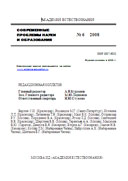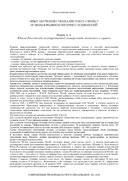PDF-версия статьи


|
To eliminate this disadvantage it is necessary to use the radically new principles of hybrid AC traction systems designing. According to these novel principles the above mentioned systems must not contain any power electronic elements operating with high frequency.
The creation of such novel hybrid traction systems is possible on the base of multiphase (i.e. having the number m of phases more than four) AC generators (for example, Diesel generators) and non-traditional controlled multiphase induction motors.
The prospects for the use of multiphase asynchronous linear and non-linear drives in the field of vehicles of different types (i.e. ground, marine, air vehicles) were presented and described in a number of papers (for example, [1, 2]).
However the increase of the phase number of asynchronous electric drive system allows not only to improve a number of its technical-and-economic characteristics, but also to create the hybrid traction drives according to scheme “AC Diesel-generator – induction motor(s)” which will differ fundamentally from the existing ones, and have more simple design and control unit and less energy losses (in comparison with analogous existing hybrid drives). These hybrid traction drives of novel type are based on the use of the multiphase AC Diesel generators and non-traditional controlled multiphase induction motors.
The basic principles of design of these hybrid traction drives of novel generation are presented in this paper. These basic design principles are the following:
- the increase of AC Diesel generator and induction motor phase numbers more than four;
- the application of such non-traditional methods of control by multiphase induction motor as the over-synchronous control method (OSM) and the phase-pole one (PPM) which are the kinds of the over-phase control method (OPM)[2, 3];
- the use of a number of novel design versions of multiphase AC induction motor.
PPM-controlled multiphase induction motor is in effect a multi-speed motor having only one winding set that is equal (in its complexity) to the winding set of 3-phase single-speed induction motor. The quantity of discrete values of the motor speed rises if the phase number of PPM-controlled multiphase AC induction motor increases.
Because of this there is no need to use a transistor inverter in such multiphase hybrid traction drive to regulate the induction motor rotor speed. The corresponding thyristor or electromechanical commutator is used in the multiphase hybrid traction drive of novel type instead transistor inverter. The operating frequency of such commutator is much less than the operating frequency of above mentioned inverter IGBTs. Owing to this the energy losses are much less and the motor control process is significantly simpler in the multiphase hybrid traction drive of novel generation (in comparison with the analogous existing hybrid drives).
The combined application of OSM and PPM are necessary for obtaining of the following:
- wide range of the motor speed regulation;
- small spacing (step) of the stepwise regulation of the motor speed.
REFERENCES
1. A. V. Brazhnikov, and I. R. Belozerov, “Prospects for the Use of Multiphase Inverter-Fed Asynchronous Drives in the Field of Traction Systems of Railway Vehicles,” International Journal of Railway, Vol. 5, No 1, 2012, pp. 38-47.
2. A.V. Brazhnikov, E.S. Brazhnikova, and I.R. Belozerov, “PPM-Based Development-and-Control Strategy of Fault Tolerant Inverter-Fed Multiphase Electromechanical AC Systems,” in Proceedings of the 21st International Symposium on Power Electronics, Electrical Drives, Automation and Motion SPEEDAM‘2012, Sorrento, Italy, 2012, pp. 237-242.
3. A. V. Brazhnikov, and I. R. Belozerov, “Over-Phase Control of Inverter Multiphase AC Linear Drives,” Mechatronics, vol. 23, issue 2, March 2013, pp. 227-232.
ОПУБЛИКОВАНО
Brazhnikov A.V., Dovzhenko N.N., Minkin A.N., Pomolotova O.V., Kolmakova A.I., Shilova V.A. MULTIPHASE HYBRID TRACTION DRIVES FOR ELECTRICAL VEHICLES. // Современные проблемы науки и образования - 2014.-№6. (приложение "Технические науки"). - C. 28